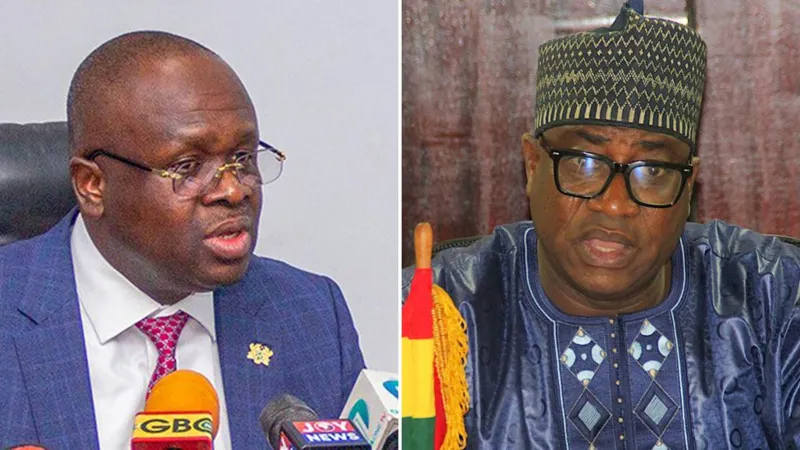Data from India’s historic moon mission supports long-standing lunar theory
The historic Chandrayaan-3 mission, which made India the fourth country to land on the moon one year ago Friday, has uncovered new evidence that supports a theory about early lunar history.

When the mission landed in the moon’s southern high-latitude regions, near the lunar south pole, it deployed a small six-wheeled rover called Pragyan, which means wisdom in Sanskrit. The rover was equipped with science instruments that allowed it to analyze particles within the moon’s soil and measure the elements there.
Pragyan made 23 measurements as it rolled along a 338-feet (103-meter) region of the lunar surface, located within 164 feet (50 meters) of Chandrayaan-3’s landing site, for about 10 days. The rover’s data marks the first measurements of elements within lunar soil near the south polar region.
The rover detected a relatively uniform composition largely made of a rock called ferroan anorthosite, which is similar to samples taken from the moon’s equatorial region during the Apollo 16 mission in 1972.
Lunar samples are helping scientists to solve mysteries that remain about how the moon has evolved over time, including how it formed during the early chaotic days of the solar system.
The presence of similar rocks in different parts of the moon lends additional support to the decades-old hypothesis that the moon was once covered by an ancient ocean of magma, the study authors said.
An ancient magma ocean
There are many theories about how the moon formed, but scientists mostly agree that about 4.5 billion years ago, a Mars-size object or a series of objects crashed into Earth and launched enough molten debris into space to create the moon.
The first lunar samples collected during the Apollo 11 mission in 1969 led researchers to the theory that the moon was once a molten ball of magma.
The 842 pounds (382 kilograms) of lunar rocks and soil returned to Earth by the Apollo missions in the late 1960s and early 1970s disproved ideas that the moon was a celestial body caught in Earth’s gravity, or that the moon formed alongside Earth from the same debris. The rock samples indicated that the moon was created about 60 million years after the solar system began to form, according to NASA.
The magma ocean, likely hundreds to thousands of kilometers deep, persisted for about 100 million years, the space agency says. As the magma ocean cooled, crystals formed within it.
Some rocks and minerals like ferroan anorthosite rose to the top to form the lunar crust and highlands, while other, denser magnesium-rich minerals like olivine sank deep below the surface into the mantle, said Noah Petro, NASA project scientist for both the Lunar Reconnaissance Orbiter and Artemis III. Petro was not involved in the new study.
While the lunar crust has an average thickness of about 31 miles (50 kilometers), the lunar mantle beneath it reaches about 838 miles (1,350 kilometers) deep.
All the minerals and rocks on the moon have a story to tell about lunar history, Petro said.
When the Pragyan rover carried out its chemical composition investigation of lunar soil, it found a mix of ferroan anorthosite and other rock types, including minerals like olivine.
The Chandrayaan-3 landing site, called Shiv Shakti Point, was about 217 miles (350 kilometers) away from the rim of the South Pole-Aitken Basin, considered the oldest crater on the moon.
The research team believes an asteroid impact created the basin about 4.2 billion to 4.3 billion years ago and unearthed magnesium-rich minerals like olivine, mixing them into the lunar soil, said lead study author Santosh Vadawale, a professor at the Physical Research Laboratory in Ahmedabad, India.
The researchers are continuing to investigate the presence of these minerals that likely originated in the moon’s mantle to provide more context for the moon’s origins and evolution, he said.
Persistent lunar mysteries
The mission proves why it is crucial to send spacecraft to different lunar regions to understand the history of the moon, Vadawale said.
“All previous successful landings on the moon have been limited to equatorial to mid-latitude regions,” he said. “Chandrayaan-3 is the first mission to have a successful landing in the polar regions of the moon and carry out in-situ analysis. These new measurements in previously unexplored areas further enhanced the confidence in the (lunar magma ocean) hypothesis.”
Next, the Indian lunar exploration program wishes to explore permanently shadowed regions of the lunar poles and return samples for a detailed analysis in laboratories on Earth, Vadawale said.
While erosion and the movement of tectonic plates have erased evidence of how Earth formed, the moon remains largely unchanged apart from impact craters, Petro said.
“Every time we land on the lunar surface, it anchors that understanding to a specific spot, a specific location on the surface, which is very useful for testing all the models and hypotheses we have,” he said. “That hypothesis of a magma ocean drives so much of what we think about the moon, especially early in its history. The rover results from the Chandrayaan-3 mission add another surface data point.”
Each mission not only adds another piece to the puzzle of understanding the moon but also affords insights into how Earth and other rocky planets like Mars formed. Scientists’ understanding of how the moon came to be drives models of how all planets form and change, including planets beyond our solar system, Petro said.
And as more missions are planned to return to the lunar surface, it’s like the gift that keeps on giving, especially with the prospect of collecting samples from different regions, including the far side of the moon and the poles.
“Every time we get a new piece of data,” Petro said, “it’s further garland on that gift.”
-CNN







